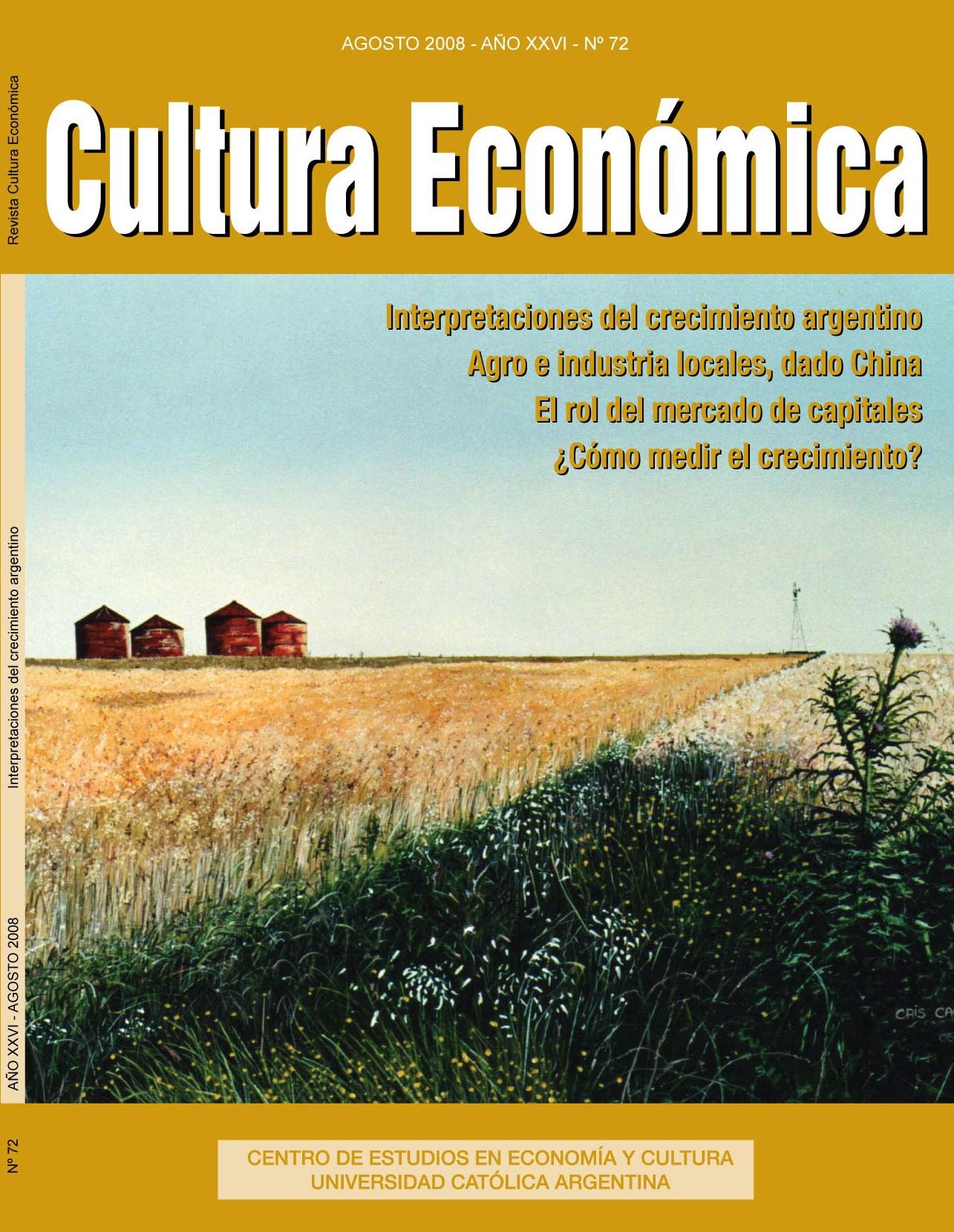How to measure growth?
Keywords:
GDP growth, poverty, income inequality, internal distributionAbstract
When analyzing the current state of the Argentine economy, politicians, journalists and economists use GDP growth as the main and sometimes most important variable to keep in mind. While that is correct in a first analysis, to remain in that primary level is considered
shortsighted by the author. Researchers such as Bourguignon (2004) have shown that a somewhat more comprehensive approach to analyzing the effectiveness of GDP growth in a society is to consider jointly the level of income inequality and poverty levels of society. According to the author, the growth of income, like income inequality and poverty levels of society are closely related.
Downloads
References
Azariadis, C. (1996a), “The Economics of Poverty Traps. Part One: Complete Markets” Journal of Economic Growth, nº 1.
Azariadis, C. (1996b), “The Economics of Poverty Traps. Part Two: Incomplete Markets”, Mimeo, Los Angeles: UCLA.
Alesina, A. y Perotti, R. (1994), “The Political Economy of Economic Growth: A Critical Survey of the Literature” World Bank Economic Review, nº 3.
Besley, T. y Burgess, R. (2003), “Halving Global Poverty”, Journal of Economic Perspectives, nº 17.
Bourguignon, F. (2004), “The Poverty-Growth-Inequality Triangle”, The World Bank Policy Research Working Paper (28102).
Cañadas, A. (2008), “Inequality y Economic Growth: Evidence from Argentina using Spatial Econometrics”, Disertación presentada
para el doctorado de la Escuela para Graduados de la Ohio State University.
De Ferranti, D., Perry, G. E., Ferreira, F. y Walton, M. (2004), Inequality in Latin America y the Caribbean: Breaking with History?,
The World Bank, Washington D.C.
Fallah, B. y Partridge, M. (2007), “The Elusive Inequality-Economic Growth Relationship: Are there Differences between Cities y the Countryside?”, The Annals of Regional Science, nº 41(2).
Forbes, K. J. (2000), “A Reassessment of the Relationship between Inequality y Growth”, American Economic Review, nº 90.
Gasparini, L., Gutierrez, F. y Tornarolli, L. (2005), Growth and Income Poverty in Latin America and the Caribbean: Evidence from Household Surveys, The World Bank, Washington D.C.
Li, H., y Hengfu Zou (1998), “Income Inequality is Not Harmful for Growth: Theory y Evidence”, Review of Development Economics, nº 2.
Lopez, H. y Serven, L. (2006), “A Normal Relationship? Poverty, Growth, y Inequality”, World Bank Policy Research Working Paper, 3814.
Partridge, M. (1997), “Is Inequality Harmful for Growth?”, The American Economic Review, nº 87.
Partridge, M. (2005), “Does Income Distribution Affect U.S. State Economic Growth?” Journal of Regional Science, nº 45(2).
Perry, G., Arias, O., López, H., Maloney, W. y Servén, L. (2006), Poverty Reduction y Growth: Virtuous y Vicious Circles, The World Bank, Washington, D.C.
Ravallion, M. (2001), “Growth, Inequality y Poverty: Looking Beyond Averages”, World Development, nº 29.
Downloads
Published
How to Cite
Issue
Section
License













